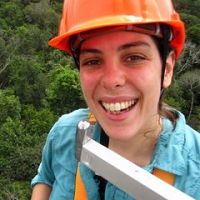Barcellos et al., 2017
Monitoring hot spots and hot moments of redox, iron and carbon cycling in Puerto Rican soils
Barcellos, Diego, Whendee Silver, Christine S. O’Connell, Nadia Noor, and Aaron Thompson (2017)
Goldschmidt - Geochemical Conference, Paris, France, Aug 2017
-
Calhoun, Luquillo, GRAD STUDENT
-
Luquillo, INVESTIGATOR
-
Luquillo, INVESTIGATOR
-
Calhoun, GRAD STUDENT
-
Calhoun, Luquillo, INVESTIGATOR, COLLABORATOR
Abstract
Soils from humid forests can undergo spatial and temporal variation (hot spots and hot moments) of oxygen concentrations leading to changes in redox potential, iron reduction rates, and carbon mineralization and stabilization. We hypothesized that: (a) hot moments of hours to days generate redox fluctuations that affect Fe reduction rates and DOC release in forest soils; and (b) these hot moments do not occur concurrently across topographic positions. To test these hypotheses we measured iron and carbon pools in 3 catenas at valley, slope, and ridge positions approximately every 2 days for a 2-month-period in a montane forest in Puerto Rico, USA. Measurements included 0.5M HCl extractable-Fe(II), total Fe, pH, DOC, and total carbon. Sensors were installed in the field to measure redox potential (platinum electrodes), soil oxygen, soil moisture, and CO2 emissions. In addition, we incubated the soils under anoxic conditions with or without Shewanella oneidensis MR-1 to assess the potential for Fe reduction and the relative abundance of rapidlyreducible Fe oxides [i.e. Fe(III)RR]. We found that rainfall and soil moisture were the main drivers of changes in iron reduction, pH, and DOC. Periods of higher precipitation led to higher Fe(II) concentrations, varying across valleys to slopes and ridges for the 3 catenas (1 to 100 mmol Fe(II) kg-1 soil). Rates of iron reduction available for iron-reducing bacteria [Fe(III)RR] during soil incubations were also correlated to high or low rainfall events and soil moisture contents, varying from 5 to 25 mmol Fe(II) kg-1 soil day-1. Comparing topographic positions, the valleys were the most responsive in terms of shifting redox potential and Fe(II) concentrations. Overall, this work supports the notion that hot moments of high soil-moisture/rainfall likely stimulate Fereduction and C-cycling for different redox conditions and topographic hot spots in Puerto Rican soils.
Citation
Barcellos, Diego, Whendee Silver, Christine S. O’Connell, Nadia Noor, and Aaron Thompson (2017): Monitoring hot spots and hot moments of redox, iron and carbon cycling in Puerto Rican soils. Goldschmidt - Geochemical Conference, Paris, France, Aug 2017.
Explore Further





